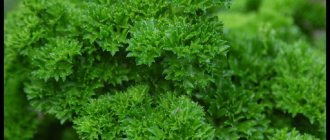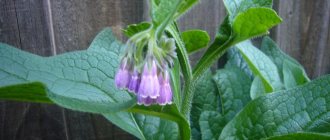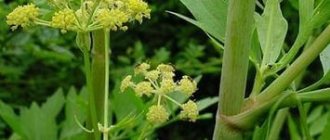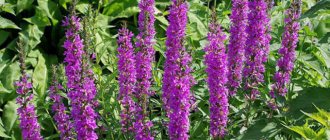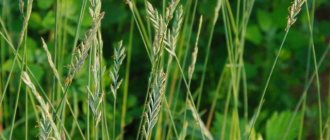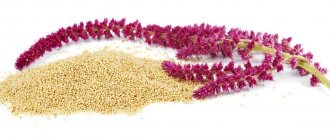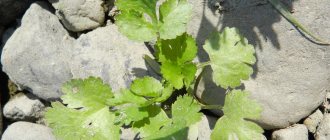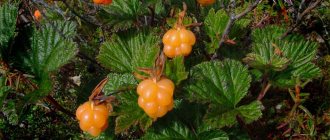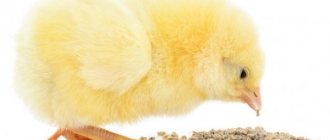In order to competently manage a poultry farm where laying hens live, the farmer needs to have a decent amount of knowledge on the topic of chicken farming. One of the most important aspects of breeding laying hens is the correct composition of their diet.
There are many foods suitable for feeding, so putting together a nutritious menu that will include the entire list of nutrients necessary for normal life is not so difficult. In order to avoid mistakes when choosing food for their pets, novice poultry farmers need to know exactly what grass can be given to laying hens.
After all, it is impossible to feed hens everything that grows around them indiscriminately. Of course, among the varieties of herbs growing on the territory of a dacha farm, there are some that are quite suitable for chicken. But the list of those that quons are prohibited from eating includes many species. These are, in particular, celandine, white acacia, etc.
What can chickens eat?
As you know, raising chickens is a fairly simple matter and does not cause serious trouble with care and maintenance. As a rule, choosing what to feed laying hens is also not much of a puzzle. Especially if the farmer knows well what and in what quantities chickens should eat during the day.
The number of meals rarely exceeds 4 times a day, but much depends on the appetite and general condition of the birds. The daily dose of food should be distributed as follows: in the morning one third of the entire daily norm is poured into the feeder, and two thirds are divided into the remaining meals.
These feedings should be done several hours apart over the course of one day. This way, laying hens are energized after sleep and then spend the day full and happy.
There is an opinion that these birds are omnivores, and feeders for laying hens can be safely filled with any leftover scraps from your own table after eating. Experienced poultry farmers will not dispute this statement, however, they know that the main part of the laying hen’s diet during the day should be the right foods, from which the individuals’ bodies will only benefit.
The diet is usually based on feed mixtures made from grain or flour. You should not refuse to use specially balanced mixed feed; mineral supplements are also allowed. Now we are focusing on what kind of grass can be fed to chickens, so we will not talk in more detail about other types of food.
Why is natural green feed so good for chickens? The main thing is that herbs suitable for feeding birds, as a rule, contain some vitamins and useful elements. If birds eat the right herbs, this will protect them from vitamin deficiency, as well as prevent the development of many diseases associated with a lack of any substance in the body.
Fresh greens are one of the key products for maintaining vitamin balance, so their presence in the diet is not easy, but necessary throughout every day.
The benefits of greenery
Green herbs contain nutrients that chickens need for normal development and productivity:
- In addition to pecking at plants, birds also consume insects as a natural protein and mineral supplement to their diet.
- When laying hens roam freely, greens make up up to 50% of the diet and allow the poultry farmer to save money spent on raising birds.
- But in winter or in conditions of continuous keeping of individuals in a chicken coop, the poultry farmer is obliged to independently supply his wards with healthy greens.
READ How to clean tartar in cats and remove the consequences
Now about the presence of poisonous plants. Feeding chickens grass should be done with caution, because there are also harmful species. An important and dangerous point in feeding chickens with phyto-mass is the presence of toxic substances in the vegetation.
Grass for chickens
Having paid attention to some general nuances in the issue of feeding chickens, you can move on to those herbs that are suitable for nutrition. What greens are recommended for the farmstead? First, let's list the plants that zoologists recommend for weekly nutrition:
- Grain mixtures, based on corn, wheat, etc.
- Grains of legumes such as peas, oats, lupine, etc.
- Nettle leaves, finely chopped and heat-treated with boiling water.
- Herbs growing in the meadows: clover, freshly cut greens, alfalfa and, containing a lot of vitamin C, sorrel. This group also includes plantain, which is useful for chickens and which they love.
- All this grass is good for the bird. In some cases, it also includes woodlice.
It is allowed to use dreamweed, which is considered a medicinal plant. However, let’s not forget that calendula also has beneficial properties.
Wild varieties can also be an excellent addition to the diet of laying hens. They diversify the daily menu of birds and are likely to be included in the permanent list of food products for the inhabitants of a chicken farm. Such plants include not only quinoa, hay, acorns, but also the following herbs:
- blooming Sally;
- hawthorn and rose hips;
- spurge;
- leaves and fruits of oak, chestnut, rowan;
- pine and spruce needles.
Vegetables grown in the garden go well with chicken as food. Birds love to eat most vegetable crops due to their varied and pleasant taste. Here are a few plants that can go straight from the garden to a chicken feeder:
- pumpkin;
- beet fruits;
- cucumber;
- lettuce leaves;
- carrot;
- potato fruits;
- cabbage;
- onion feathers.
These greens can be given to chickens, however, the lists presented are far from complete, and there are many more plants acceptable for chickens to eat. For example, some also feed the bird duckweed, a perennial branchy plant. However, this plant is given to pets with caution.
The thing is that this plant is found in swamps and ponds, so it can carry some parasites. At the same time, farmers still classify duckweed as a herb that is beneficial for poultry, since it contains a lot of proteins, vitamins, and minerals.
Is it possible to give chickens fruit? They are worth highlighting separately, since the fruit can be given to chickens without any fear. Of course, you shouldn’t get carried away, because you can overdo it with the amount of any product. And since fruits often contain a wide range of different substances in their composition, you need to be doubly careful with them.
Excessive content of one or another element in the body of a laying hen can negatively affect its condition. How to make a healthy diet for poultry, including all kinds of food groups? We carefully distribute and give portions, and then no problems will arise. You can pamper the hens during the day with pears, plums, apples and even watermelons.
Do not forget that all these products must be chopped with a knife or other kitchen tools.
After all, birds simply cannot peck a whole pear, so the breeder himself must give this fruit to the chickens in cut form. Interestingly, grape leaves can also diversify a pet's diet. Strawberries also join them. Of course, they need to be given infrequently: once every few days, however, they will not harm the health of the bird.
Is it possible to give chickens grass and what to feed them?
To ensure that the balance of nutrients in the chicken’s body is not disturbed, special attention should be paid to the composition of its diet. Of the above-mentioned vegetables, pumpkin and carrots are perfect. The stage of active growth and development is the period when chickens can be fed these vegetable crops, as they are full of carotene.
This enzyme helps accelerate processes in the bodies of chicks, helping them grow healthy and fertile. The amount of product that can be given to chickens should be calculated as follows: up to 20 grams of feed for each baby.
Prevention of a healthy lifestyle
If the farm practices non-walking poultry, it is best to hang herbs in the chicken coop in bundles rather than leave them on the floor. Lack of walking deprives the animal of its natural ability to sense space and contributes to obesity and disease. In this case, a bunch of greenery is fixed at a height of half a meter to a meter, which gives the birds the opportunity not only to eat, but also to graze while warming up.
Speaking about the properties of vegetation, one cannot fail to mention that some herbs are used by poultry farmers as vitamin-enriched therapeutic and prophylactic agents. For example: yarrow, larkspur and tansy prevent infection of chickens with helminthiasis or, more simply, with worms.
READ Faverol chickens: photo and description of the breed
Don’t forget to enjoy worms in the summer; read the link about the benefits of worms in feeding chickens.
The materials you reviewed about feeding chickens with grass may be useful for your loved ones - share the article you read with your friends on social networks. And don’t forget that you have the opportunity to receive fresh materials - to do this you just need to subscribe to site updates.
See you soon and all the best to you!
In the comments you can add your photos of laying hens, roosters and chicks! Or other poultry. We're curious, what kind of chicken coop do you have?
In the comments you can add your photos of laying hens, roosters and chicks!
Nutrition during the molting period
The process during which chickens molt occurs at least once every year in adult laying hens and more often in younger ones. As a rule, it occurs between summer and autumn. At this moment, the organisms of all the inhabitants of the poultry farm are in a weakened state. The fact is that along with molting, birds are attacked by vitamin deficiency, one of the companions of which is a general deterioration in their health.
Therefore, it is important that the breeder provides sufficient amounts of vitamin-rich foods during this period. How to ensure optimal nutrition for chickens during the molting period? This is where green herbs will come to the rescue - feel free to add them to the diet of laying hens, because they are full of a variety of useful elements that will help protect chickens from serious illness.
Season's nuances
Grass can also be fed to chickens in its whole form, which is appropriate to do in the summer, while at the same time carrying out procurement work for the winter. Thoroughly dried, crushed straw is later added to various mixtures, thereby enriching the feed with vitamins and minerals that are deficient in cold seasons.
Now about the presence of poisonous plants. Feeding chickens grass should be done with caution, because there are also harmful species. An important and dangerous point in feeding chickens with phyto-mass is the presence of toxic substances in the vegetation.
In summer, it will be appropriate for chicken to eat freshly cut herbs. Fresh lawn grass will also work. Don’t forget to also prepare feed and tops for the winter. When can you give hay to chickens? Dried and chopped straw is perfect for diluting the diet of chickens on cold days, feeding them with vitamins and minerals.
What grass should you not give to chickens?
Of course, not all greens are allowed for chickens to eat. There are varieties of plants that can seriously harm laying hens due to the toxic substances in their composition. Therefore, it is prohibited to give such herbs. The key to keeping chickens healthy will once again be the careful attention of the farmer. He needs to clearly know the list of herbs that are not suitable for adding to the feeder.
Feeding which greens will jeopardize the well-being of chickens? These are burdock, dandelion, celandine, juniper, etc. As a rule, these are the plants that can grow on the site. Among the things that fill the garden there are also harmful products. What herbs are these? These include:
- dill leaves;
- green part of tomatoes;
- potato inflorescences and leaves;
- beet tops.
Wormwood is given with caution. Sometimes it can cause diarrhea and diarrhea in the bird, so it is better for the breeder to avoid it. Rhubarb contains a lot of acid, which can also be harmful. Therefore, the inclusion of this herb in the diet is also approached carefully.
Note that if you give mustard and ginger to chickens, the nervous system will become more shaken, which will not play into the hands of the breeder. Therefore, it is better to protect the bird from these plants.
In the process of evolution, domestic chickens have acquired the ability to independently determine which plants they should refuse. For example, they avoid celandine. But don't rely solely on their legibility. Spend the extra time creating a balanced diet to ensure your chickens are fed only healthy foods.
This is done in order to avoid unnecessary problems that may arise due to harmful products. The food listed above, including tomato greens, should under no circumstances end up in the hen's feeder; this must be strictly controlled.
Beneficial weeds
The good thing about weeds is that you don’t need to specifically plant them. They grow for free in every garden:
- Dandelions are the best way to ensure a bright yolk in eggs. Dandelion is rich in vitamins, contains carotene and nicotinic acid, and has an overall beneficial effect on the health of birds. Young animals should be given only the tender parts of the dandelion - crushed leaves and inflorescences. The adult bird also consumes the roots.
- Alfalfa – helps strengthen the eyesight of birds. The sooner you start giving it, the better. If possible, it is recommended to build a run for chickens where alfalfa grows.
- Clover - contains a lot of protein, and during flowering its composition increases the amount of fiber and vitamin C. Clover can be given to chickens starting from three days of age.
- Quinoa is highly nutritious. It contains many minerals and nutrients, for example, carotene, vitamins C and E, rutin, amino acids. Quinoa is especially recommended for feeding chickens for better growth and development.
- Yarrow is a good remedy against helminths in birds.
- Nettle – has a beneficial effect on digestion, improves immunity, and has a general healing effect. Due to its availability, it is recommended to give nettle not only in summer, but also in winter - when dried, the plant does not lose its beneficial properties. Is a rich source of vitamin C.
- Woodlice is given to birds for general well-being, as it contains antitoxins, tannins and minerals that help the functioning of the heart and thyroid gland. Woodlice is also recommended for chickens suffering from foot diseases to alleviate the condition.
These are not all weeds suitable for feeding chickens and young animals. I also recommend giving your bird plantain, knotweed, tansy and amaranth.
Poisonous plants for laying hens
In order not to poison the chickens, it is necessary to inspect their roaming area. Usually chickens themselves are able to distinguish useful vegetation from harmful ones, but it is better to keep this issue under control. If poisonous plants are found in the pasture, they should be removed. It is best to dig them up by the roots - there is less chance that they will sprout again.
Harmful grass for chickens:
- broom;
- cockle;
- black nightshade;
- henbane;
- hemlock;
- horse chestnut;
- spotted hemlock;
- belladonna;
- left-handed jaundice;
- hellebore;
- elder;
- potato inflorescences;
- juniper.
All these plants can cause disease or death of birds. Therefore, you need to keep the paddock clean, be able to identify poisonous plants and know what grass the chickens like. Another option is to keep the laying hens from leaving the pen, adding only those components to the diet whose benefits are beyond doubt.
In order for chickens to develop well and laying hens to be healthy and productive, their diet must include fresh greens. In addition to containing vitamins, plants serve as a preventative against many diseases.
They also strengthen the immune system. But before introducing green supplements into the diet, you need to know whether the selected herbs can be given to chickens, and what effect can be expected from them.
Rose hip
Its fruits contain very high levels of useful substances. Birds love to peck rosehip seeds, which are located inside the fruit. This way food is digested faster and the absorption of vitamins increases.
For the winter, the berries are dried naturally in order to preserve all the beneficial substances with minimal loss. It should be stored in a dark and dry place, preferably in cotton bags.
Chickens need rose hips more in the fall and spring, when the immune system weakens slightly. Add to food in small portions, several times a week (3-4).
Be careful with essential oils
Essential oils are often used inappropriately or in too large quantities. Especially if a person does not have information about their use and exact dosages. That's why I always prefer fresh or dried herbs.
Some of the unsafe plants can be found in many poultry products. Therefore, it becomes necessary to always check the ingredient list carefully before purchasing herbal chicken supplements.
I avoid using poultry house products and materials that contain any potentially harmful ingredients. Since chickens can peck even inedible objects, harmful substances in their composition can harm the health of the bird.
Here is a list of some toxic plants that I avoid using. They can cause symptoms of quite serious diseases in the bird, and in the worst case, lead to death.
